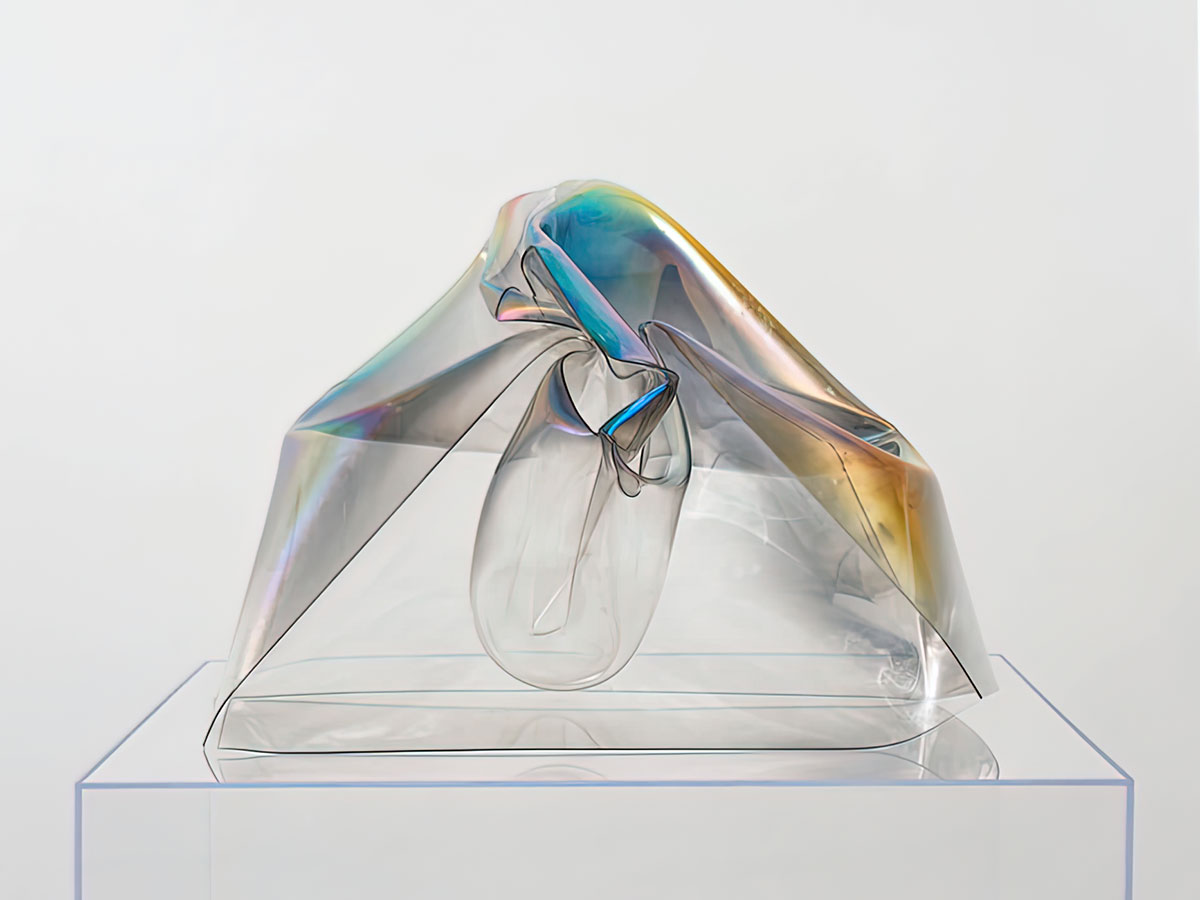ART CITIES: Los Angeles-Larry Bell and John Chamberlain
 Friends as well as iconic artists of the American postwar period, Larry Bell and John Chamberlain each forged distinct careers by harnessing the new technologies of their time to transform everyday materials into pathbreaking works of art. Yet little is known of the formative dialogue between them that helped shape their respective artistic practices and the language of 20th-century art.
Friends as well as iconic artists of the American postwar period, Larry Bell and John Chamberlain each forged distinct careers by harnessing the new technologies of their time to transform everyday materials into pathbreaking works of art. Yet little is known of the formative dialogue between them that helped shape their respective artistic practices and the language of 20th-century art.
By Efi Michalarou
Photo: Hauser & Wirth Gallery Archive
An exhibition with works by Larry Bell and John Chamberlain is on show in Hauser & Wirth Gallery Los Angeles that focuses on their exchange of ideas as revealed through series of works, some never before exhibited, that include sculpture, works on paper, and photography. In September 1962, Larry Bell and John Chamberlain met by chance at the famed Ferus Gallery in Los Angeles. Soon thereafter Bell introduced Chamberlain to fellow Light and Space artists Robert Irwin and John McCracken, among others, who were living and working near his studio on Marine Street in Ocean Park close to Venice Beach. Over the following years while both shuttled between the artistic circles of New York and LA, Bell and Chamberlain formed a close friendship predicated upon a mutual penchant for technical innovation, and an intensive cross-pollination of ideas and discoveries. In the late 1960s, Chamberlain moved back to Los Angeles and lived with Bell, sharing his studio space on Marine Street, until he moved into Bell’s nearby Market Street studio. Working side by side, the men pushed one another to expand the material and formal possibilities of their respective practices. “Larry Bell & John Chamberlain” is the first exhibition to focus on this period of reciprocity and explosive creativity, bringing together seminal works developed by the two artists via the industrial technologies available after World War II. In the ‘60s, Los Angeles was the center of the aeronautics industry that had burgeoned during the war, and Bell was one of the first artists to apply its commercial manufacturing processes to his work. One of the signatures of his artistic approach is its use of a vacuum deposition chamber, which Bell first acquired in the late ‘60s. Called “The Tank” this tool permitted him to coat sheet glass in specific ways that alter how absorbent, transmissive, or reflective it appears to the eye. With the aid of this tool both Bell and Chamberlain explored the possibilities of form, materiality, and color. A suite of Bell’s iconic glass cube sculptures, including “Orange Blue” (1969/2022) and “Golden” (1969/2022), display surface treatments achieved through thermal evaporation technology developed for cutting-edge aeronautics and optics – a process the artist began using in the ‘60s and is still refining in his work today. This technology deposits films of vaporized metallic and non-metallic substances onto glass panes without altering the fundamental nature of the glass itself, rendering a chimerical visual effect of space and form. Testament to Bell’s tirelessly inventive sculptural practice, four of the works on view are rare examples of cubes realized for the first time, presenting an historic culmination of projects he began in the late ‘60s using original materials and plans from the era. Further illuminating Bell’s expansive technical process, a selection of large-scale ‘vapor drawings’ were created through the application of his signature industrial coating process to paper. In these works, thin layers of aluminum and silicon monoxide are vaporized onto the paper’s surface in variable degrees of thickness, accruing in layered images. In “VF 9” (1978) and “VF 65” (1978), alternating bands of gradients create abstract compositions with rainbow-like refracted light to stunning optical effect. In dialogue with the atmospheric properties of Bell’s cubes, the glossy reflective surfaces of “Hano” (1970), “Gallup” (1970), and “Luna, Luna, Luna (In Memory of Elaine Chamberlain)” (1970) showcase Chamberlain’s constant experimentation with new media. The examples on view from this significant series represent the outcome of an historic seven-year period of intensive investigation and development in which the artist deliberately shifted his focus from working with his signature materials like steel. To create these works, Chamberlain exposed plexiglass boxes to varying degrees of heat so that they melted for just a few minutes, arriving at irregular, contoured forms. He then annealed the resulting sculptures for up to twelve hours in order to preserve the integrity of the material’s structure as it cooled. Using a vacuum tube, Bell helped Chamberlain apply a mineral coating to the surfaces of the works, amplifying their reflective properties. This exhibition reconstitutes six pieces from this pivotal series which were first shown at Leo Castelli gallery in 1971, offering viewers the unprecedented opportunity to experience these works together, and is made possible through loans from Dia Art Foundation, Sonnabend Collection, and important private collections in New York and Los Angeles.
Photo: John Chamberlain, Luna, Luna, Luna (In Memory of Elaine Chamberlain), 1970, Mineral-coated synthetic polymer resin, 77.5 x 94 x 76.2 cm / 30 1/2 x 37 x 30 in, © 2019 Fairweather & Fairweather LTD / Artists Rights Society (ARS), New York, Courtesy John Chamberlain Estate and Hauser & Wirth Gallery
Info: Hauser & Wirth Gallery, 901 East 3rd Street, Los Angeles, CA, USA, Duration: 4/8-10/10/2022, Days & Hours: Tue-Sun 11:00-18:00, www.hauserwirth.com/




